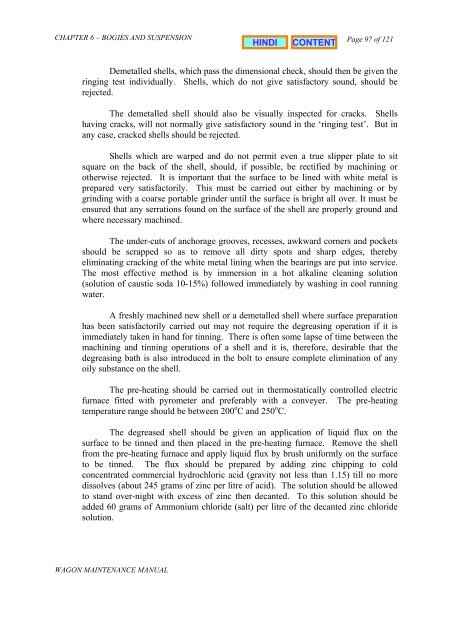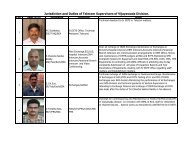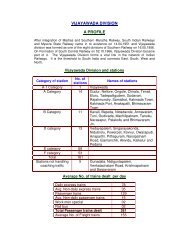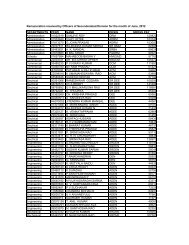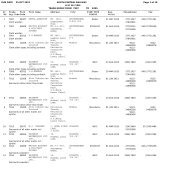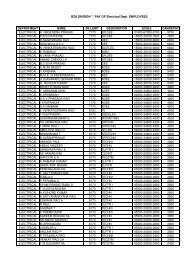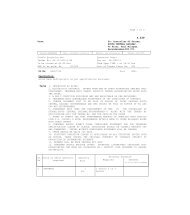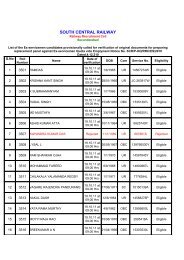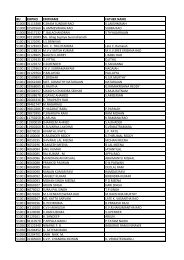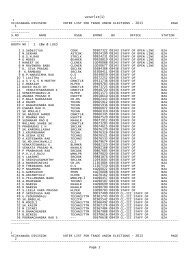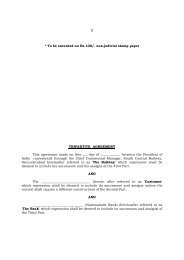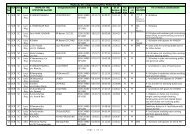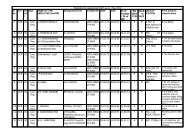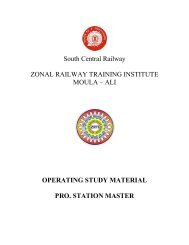BOGIES AND SUSPENSION - South Central Railway
BOGIES AND SUSPENSION - South Central Railway
BOGIES AND SUSPENSION - South Central Railway
You also want an ePaper? Increase the reach of your titles
YUMPU automatically turns print PDFs into web optimized ePapers that Google loves.
CHAPTER 6 – <strong>BOGIES</strong> <strong>AND</strong> <strong>SUSPENSION</strong><br />
WAGON MAINTENANCE MANUAL<br />
Page 97 of 121<br />
Demetalled shells, which pass the dimensional check, should then be given the<br />
ringing test individually. Shells, which do not give satisfactory sound, should be<br />
rejected.<br />
The demetalled shell should also be visually inspected for cracks. Shells<br />
having cracks, will not normally give satisfactory sound in the ‘ringing test’. But in<br />
any case, cracked shells should be rejected.<br />
Shells which are warped and do not permit even a true slipper plate to sit<br />
square on the back of the shell, should, if possible, be rectified by machining or<br />
otherwise rejected. It is important that the surface to be lined with white metal is<br />
prepared very satisfactorily. This must be carried out either by machining or by<br />
grinding with a coarse portable grinder until the surface is bright all over. It must be<br />
ensured that any serrations found on the surface of the shell are properly ground and<br />
where necessary machined.<br />
The under-cuts of anchorage grooves, recesses, awkward corners and pockets<br />
should be scrapped so as to remove all dirty spots and sharp edges, thereby<br />
eliminating cracking of the white metal lining when the bearings are put into service.<br />
The most effective method is by immersion in a hot alkaline cleaning solution<br />
(solution of caustic soda 10-15%) followed immediately by washing in cool running<br />
water.<br />
A freshly machined new shell or a demetalled shell where surface preparation<br />
has been satisfactorily carried out may not require the degreasing operation if it is<br />
immediately taken in hand for tinning. There is often some lapse of time between the<br />
machining and tinning operations of a shell and it is, therefore, desirable that the<br />
degreasing bath is also introduced in the bolt to ensure complete elimination of any<br />
oily substance on the shell.<br />
The pre-heating should be carried out in thermostatically controlled electric<br />
furnace fitted with pyrometer and preferably with a conveyer. The pre-heating<br />
temperature range should be between 200 o C and 250 o C.<br />
The degreased shell should be given an application of liquid flux on the<br />
surface to be tinned and then placed in the pre-heating furnace. Remove the shell<br />
from the pre-heating furnace and apply liquid flux by brush uniformly on the surface<br />
to be tinned. The flux should be prepared by adding zinc chipping to cold<br />
concentrated commercial hydrochloric acid (gravity not less than 1.15) till no more<br />
dissolves (about 245 grams of zinc per litre of acid). The solution should be allowed<br />
to stand over-night with excess of zinc then decanted. To this solution should be<br />
added 60 grams of Ammonium chloride (salt) per litre of the decanted zinc chloride<br />
solution.


